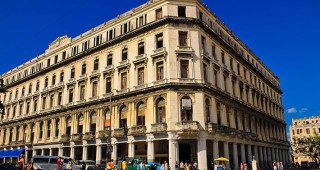The construction of the Alameda de Paula, one of Havana’s first promenades, was commissioned by Captain General Felipe de Fondesviela, member of the court of King Carlos III, and built by architect Antonio Fernández de Trebejos in 1777. Initially, this promenade was merely a dirt track with some benches, flanked by two lines of poplars. It was named Paula after the nearby church of San Francisco de Paula.
This stretch became one of the city’s most visited places after a tiled pavement and stone seats were added in 1805. A few years later, a fountain with a marble column was built in honor of Captain General Leopoldo O’Donell. Today, the column survives.
In 1841, the narrow stairs were expanded and several lamps were installed, making it even more attractive for Habaneros. And in 1845, the pavement, benches and stairs were improved, and a lovely esplanade was built. By 1847, a marble fountain was installed. And it was around that time that construction works began for many of the mansions near the promenade. The area kept gaining in popularity and more mansions were built around it. Many of these constructions are now regarded as jewels of Cuban architecture. Unfortunately, in 1911 part of the promenade was demolished by a US company to make room for port and storage facilities.










 Other
Other








